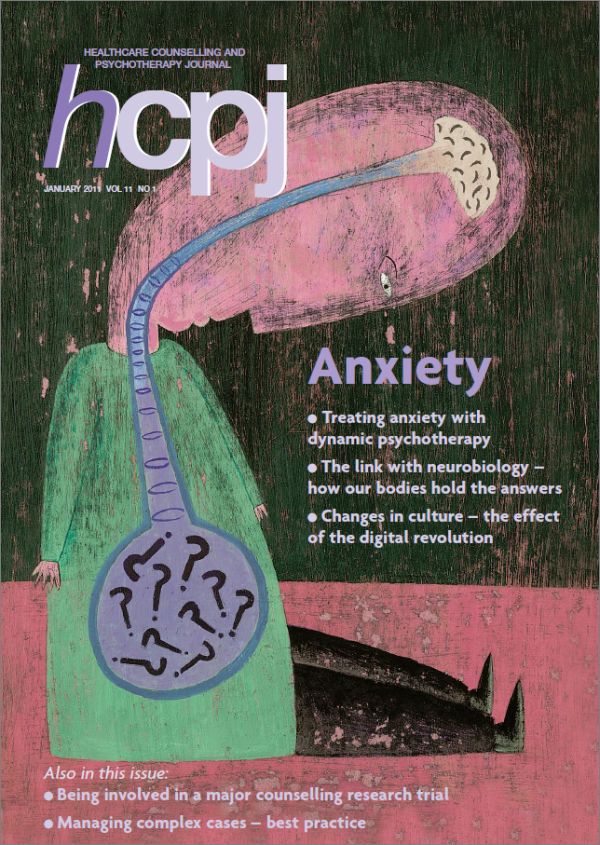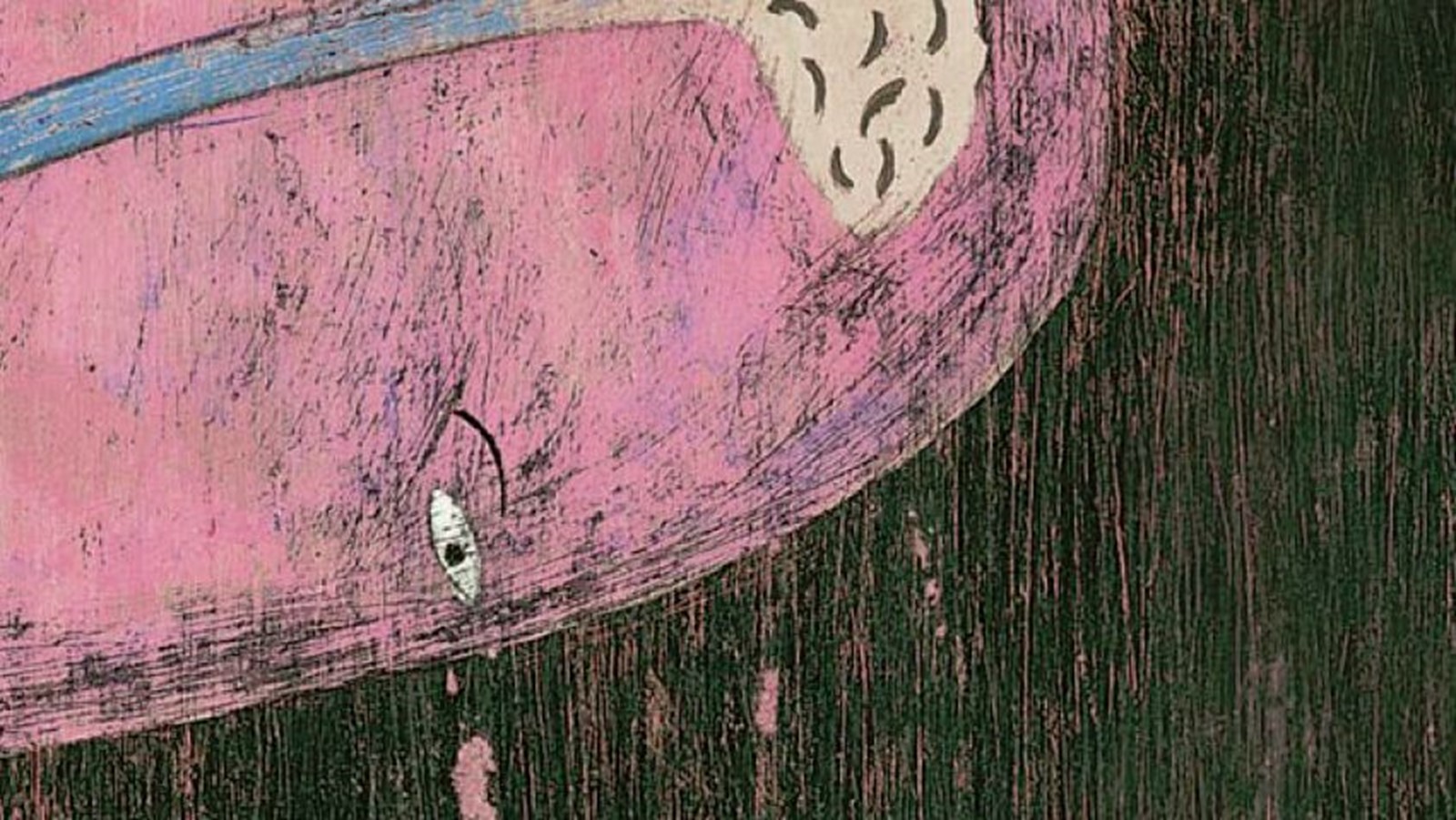In this issue
Understanding and effectively treating anxiety symptoms with psychotherapy
Intensive short-term dynamic psychotherapy (ISTDP) interprets anxiety as the gateway to the unconscious. Robert J Neborsky and Sharon Lewis present an overview of a treatment that addresses root causes
Experiential psychotherapy and the vagus nerves
With its correlates to neurobiology, the technique of focusing may reduce vulnerability to anxiety, writes Joseph Bray
Trends in anxiety during adolescence
Changes in culture influence the course of anxiety among young people, says Richard Graham
Mindfulness-based cognitive therapy (MBCT) for severe health anxiety
Initial evidence indicates that MBCT may be an effective treatment for health anxiety. Freda McManus, Kate Muse and Christina Surawy describe its benefits
CBT-based self-help in treating anxiety
Margaret Hawkins outlines the work of No Panic, a charitable organisation which uses an innovative model of support for people with anxiety disorders
Opinion
Peter Jenkins considers Kennedy’s Review: a new focus on the needs of children in the NHS?
A brief guide to…
…cognitive behavioural therapy for anxiety disorders
On the receiving end
Learning how to cope with panic attacks allowed Tracy Osler to meet the challenges that life brings
In memory of Lynne Thompson FBACP
Pat Seber pays tribute to her friend and colleague
Research matters
Sara Perren continues her account of being involved in a major research trial
GP viewpoint
Teaching anxiety management from an early age could be beneficial for both patients and GPs, argues John Hague
Best practice
Brian Rock and Anca Carrington outline the work of a new service offering support to patients and GPs in the management of complex cases
Web resources: anxiety
Key websites for further information
BACP Healthcare update
Chair Tina Campbell and BACP healthcare development manager, Louise Robinson, invite members to get in touch

Articles from this issue are not yet available online. Divisional members and subscribers can download the pdf from the Healthcare Counselling and Psychotherapy Journal archive.
Editorial
How do you work with clients who present with anxiety? What theory informs your practice? It might be, for instance, that as a practitioner, you don’t accept a medicalised label and work with the whole person; at the other end of the spectrum, it might be that your aim is to help clients with a diagnosed anxiety disorder reduce their symptoms. The theme of this issue of HCPJ is ‘anxiety’ and its articles reflect some very different theoretical perspectives and corresponding therapy options for people with anxiety which should give plenty of food for thought.
Writing authoritatively about intensive short-term dynamic psychotherapy (ISTDP), Robert J Neborsky and Sharon Lewis see anxiety arising out of a person’s early attachment relationships, with the root cause of current symptoms being the avoidance of core emotions. In treatment, therefore, anxiety becomes a tool the clinician uses to help people recover from their symptoms.
Joseph Bray also describes a psychotherapeutic approach. The technique of focusing has its roots in neurobiology: from this perspective, distressing emotions – particularly fear – are correlated with the nervous system, and particularly the vagus nerves. In a fascinating article, the author describes the link between these nerves and a form of introspection that centres on inner body awareness and directs the client’s attention towards the vast unknown territory of their physiology.
Cognitive behavioural therapy (CBT) is the approach recommended in the National Institute for Health and Clinical Excellence (NICE) guidelines (the amended guideline is due early 2011 and it will be interesting to see if other modalities have gained the acceptable level of evidence for inclusion). Our guide to CBT in treating anxiety, the first in a series of brief guides, demonstrates how the theories behind cognitive therapy and behavioural therapy have come together into a coherent and flexible therapeutic approach.
In recent years, a ‘third wave’ of development has been incorporated into the CBT approach and prominent among these is mindfulness-based cognitive therapy (MBCT). Initial evidence suggests MBCT may be useful in treating clients with what was previously known as hypochondriasis. Although classified in the Diagnostic and Statistical Manual (DSM-IV) as a somatoform disorder, hypochondriasis is now increasingly called health anxiety and is a clinically significant problem for up to five per cent of the population. With a randomised controlled trial underway, Freda McManus, Kate Muse and Christina Surawy expertly guide the reader through how this promising treatment may work.
Moving from a treatment perspective to a wider view, Richard Graham takes an insightful look at the societal influences which affect the course of anxiety in young people. Discussing, in turn, anxieties concerning appearance and anxieties resulting from the impact of the digital revolution, including video games and Facebook, the author points to the contemporary dimension of anxiety, and urges us to be open to its current manifestation to be able to help young people move confidently into adulthood.
Elsewhere, Sara Perren continues her informative series of articles on what it’s like to be involved in a randomised controlled trial – essential reading for any practitioner thinking of doing the same; and Brian Rock and Anca Carrington outline the work of a new service offering support to clients and GPs in the management of complex cases.
As new editor of HCPJ, I’m very keen to receive your feedback on any of the articles which appear in this issue. As a result, you’ll find prompts at the end of each piece, with contact details. Alternatively, please let me know what issues are affecting you as a practitioner today. As a member of BACP’s Healthcare executive and a working (integrative) practitioner myself, I’m particularly interested in the experiences of therapists on the ‘frontline’ and what might be of interest to you. Ideas for articles are very welcome, as are possible contributors for our book reviews section.
Most of the articles in this issue were commissioned by outgoing editor, Penny Gray, who, after six years’ hard work, is taking a much-earned sabbatical. Many thanks to Penny for her truly excellent work on the journal.
Sarah Hovington
Editor
hcpj.editorial@bacp.co.uk
